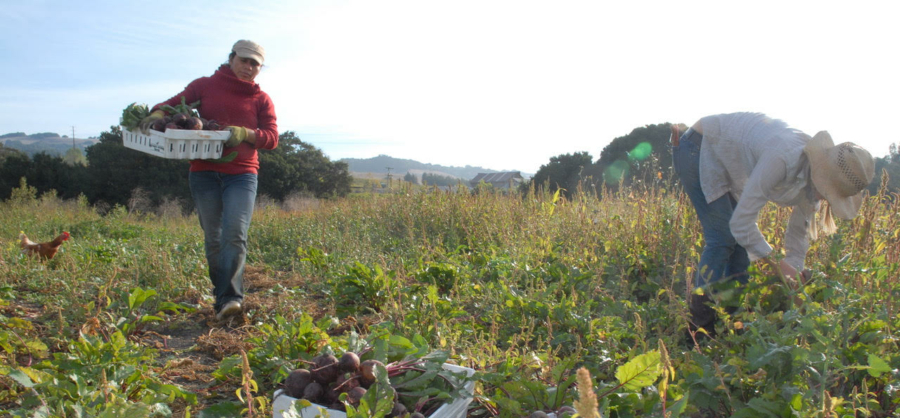SACRAMENTO, August 11, 2022 — Earlier today, the Natural Carbon Sequestration and Resilience Act (AB 2649, C. Garcia) failed to advance out of the California State Senate Appropriations Committee. AB 2649 aimed to set California’s first-ever statutory targets for naturally removing past climate pollution from the atmosphere through soil and vegetation on natural, urban, and working lands. This would have included restoring important natural carbon sinks, such as coastal wetlands.
Although the bill was held, nature-based sequestration has become a higher priority for the Newsom administration in recent weeks. The governor first signaled his desire to set an ambitious natural carbon removal target in a letter to the California Air Resources Board. He reiterated that goal in a memo circulated to state legislators last week and is expected to release additional details on his legislative priorities in the coming days.
“I introduced the Natural Carbon Sequestration and Resilience Act to protect public health in California’s frontline communities,” said Assemblymember Cristina Garcia (D-Bell Gardens). “I remain unequivocally committed to that goal. Unlike engineered carbon capture methods proposed by fossil fuel corporations, natural carbon sequestration solutions like urban tree-planting, compost application, and agroforestry are ready to deploy now, affordable, and environmentally just.
“This summer has been a stern reminder that bold action is needed now. We must use all the tools available to us — it’s literally a matter of life and death. California is hotter and drier, our water is more scarce, our food supply is in danger, and our forests are on fire. Sequestration of carbon on natural and working lands is the path forward California lawmakers and regulators must pursue if we are truly going to protect vulnerable communities like mine.”
AB 2649 was introduced by Assemblymember Cristina Garcia and co-authored by Assemblymember Mark Stone (D-Monterey Bay) with Senators Josh Becker (D-San Mateo), Monique Limón (D-Santa Barbara), and Nancy Skinner (D-Oakland). It’s sponsored by The Climate Center with co-sponsors Carbon Cycle Institute, the California Association of Resource Conservation Districts, and Pew Charitable Trusts.
“The Natural Carbon Sequestration and Resilience Act was designed to help California tackle several crises at once,” said The Climate Center CEO Ellie Cohen. “Ever-worsening drought, wildfires, and air pollution remain massive challenges for our state. We are grateful that Governor Newsom has called on regulators to set natural carbon removal targets for California. We now urge the governor and lawmakers to include bold, achievable targets for carbon sequestration on natural and working lands in a climate package before the legislature adjourns for the year.”
“After being heavily lobbied by oil and gas interests, the California Air Resources Board (CARB) is considering pouring billions of dollars into failed, polluting carbon capture and storage projects. Natural carbon sequestration should be prioritized over engineered carbon removal scams for the health of our communities and our climate. Only then can we leverage the potential of California’s natural and working lands to sequester carbon, improve water security, and build resilience to growing climate impacts.”
A recent report from The Climate Center found that California’s working and urban lands have the potential to sequester up to 103 MMT of past climate pollution from the atmosphere per year. Adding sequestration on natural lands and waters, as AB 2649 does, further increases the potential for scalable, cost-effective, natural solutions. The bill sets a bold and achievable goal of sequestering 60 million metric tons (MMT) of carbon dioxide equivalent (CO2e) each year by 2030, increasing to 75 MMT annually by 2035. For comparison, 60 MMT of CO2e is equivalent to the annual greenhouse gas pollution from roughly 13 million passenger vehicles.
ENDS
Notes:
The Natural Carbon Sequestration and Resilience Act of 2022 (AB 2649) fact sheet is available here and the full bill language here. A full list of more than 80 supporting organizations is available here. Additional details on the differences between fossil fuel CCS, direct air capture, and natural carbon removal are available here. More information on natural carbon removal on working lands and its benefits for California can be found in The Climate Center’s report, Setting an Ambitious Sequestration Goal for California’s Working Lands.
Contact: Ryan Schleeter, Communications Director, The Climate Center: ryan@theclimatecenter.org, (415) 342-2386
About The Climate Center:
The Climate Center is a climate and energy policy nonprofit working to rapidly reduce climate pollution at scale, starting in California. We are a think-tank, do-tank working to turn bold ideas into action for an equitable, climate-safe future. Our flagship Climate-Safe California campaign is a unique and comprehensive effort to make California the first state in the nation to reach carbon negative.


